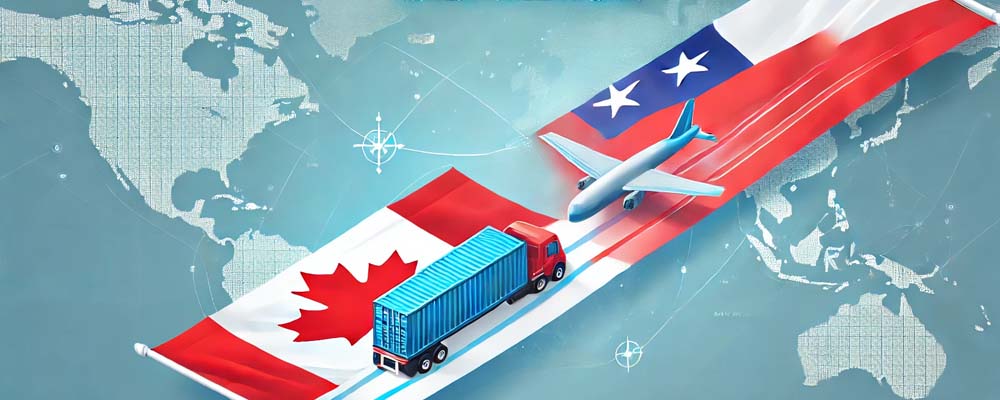
International shipping can be a complex process, especially when it involves two countries with distinct regulations, geography, and business environments like Canada and Chile. For companies in the freight forwarding industry, importers, exporters, customs brokers, and logistics providers, understanding the intricacies of shipping from Canada to Chile is crucial to ensuring smooth, cost-effective operations.
This blog will cover everything you need to know about shipping from Canada to Chile, providing an in-depth look at logistics challenges, customs regulations, shipping routes, documentation, and the best practices to ensure a seamless shipping experience.
1. Overview of Trade Relations Between Canada and Chile
Canada and Chile have a well-established trade relationship, bolstered by the Canada-Chile Free Trade Agreement (CCFTA), which came into effect in 1997. This agreement has reduced tariffs on a wide range of goods, simplifying the export process and encouraging trade between the two countries.
Key Trade Statistics:
- Total Trade Volume: Canada is a significant trading partner for Chile. The total value of goods traded between Canada and Chile reached over $3 billion in recent years.
- Exports from Canada to Chile: Canadian exports to Chile primarily consist of agricultural products, machinery, chemicals, and transportation equipment.
- Imports from Chile to Canada: Canada imports products like copper, fruit, seafood, and wine from Chile, benefiting from Chile’s rich natural resources.
For businesses involved in the freight forwarding or logistics sectors, the CCFTA plays a vital role in reducing tariffs and creating opportunities for more efficient supply chains.
 2. Shipping Routes Between Canada and Chile
2. Shipping Routes Between Canada and Chile
The distance between Canada and Chile presents certain challenges for logistics providers, especially in terms of transit times and costs. The choice of shipping route largely depends on the type of goods, urgency, and cost considerations.
a. Ocean Freight
- Popular for bulk and non-urgent shipments, ocean freight is one of the most common modes of transportation between Canada and Chile. The ports of Vancouver (Canada) and Valparaíso and San Antonio (Chile) are key hubs for these shipments.
- Ocean freight generally takes between 20-30 days, depending on the specific ports and routing.
- Containerized Cargo: For general goods, containers ranging from 20-foot to 40-foot are typically used.
- Full Container Load (FCL) vs Less than Container Load (LCL): Depending on the volume of goods, companies can choose between FCL for larger shipments or LCL when shipping smaller consignments that don’t require a full container.
b. Air Freight
- Ideal for time-sensitive or high-value goods, air freight offers a faster but more expensive alternative to ocean shipping. Transit times for air freight between major airports in Canada and Chile are typically between 2-5 days.
- Major Airports: Shipments commonly pass through Toronto Pearson International Airport or Vancouver International Airport in Canada, and Arturo Merino Benítez International Airport in Santiago, Chile.
c. Intermodal Solutions
- In some cases, businesses may opt for intermodal shipping, which involves combining different transportation methods like air, rail, and ocean freight to optimize costs and delivery times.
Best Practice:
- Balance Cost and Time Sensitivity: For large shipments that are not time-sensitive, ocean freight provides significant cost savings. For smaller or urgent shipments, air freight is more appropriate despite its higher cost.
3. Customs Clearance and Documentation
One of the most critical aspects of shipping internationally is ensuring compliance with customs regulations in both Canada and Chile. Both countries have stringent documentation requirements, and non-compliance can result in delays, penalties, or even the rejection of shipments.
Key Documents Required for Shipping From Canada to Chile:
- Commercial Invoice: Provides details about the goods being shipped, including description, value, and origin.
- Packing List: Lists the items in the shipment and helps customs officials verify the contents.
- Bill of Lading (for ocean freight) or Airway Bill (for air freight): A legal document that provides details about the shipment, including the carrier and consignee.
- Certificate of Origin: Proves that the goods originated from Canada, allowing for preferential tariff treatment under the CCFTA.
- Import Licenses (if applicable): Certain products may require an import license in Chile, depending on their nature (e.g., medical equipment, food, chemicals).
- Customs Declaration: Required by both Canadian and Chilean customs to facilitate the clearance process.
Customs Duties and Taxes:
- Under the Canada-Chile Free Trade Agreement, many products are eligible for reduced tariffs or duty-free status. However, it’s essential to check the Harmonized System (HS) codes to determine the applicable duties for specific goods.
- Importers must also account for Value Added Tax (VAT) in Chile, which is currently 19%.
Customs Best Practices:
- Accurate Documentation: Ensure that all documents are accurate and complete to avoid delays.
- Use of a Customs Broker: Working with an experienced customs broker can help navigate the complexities of customs clearance in Chile and ensure compliance with local regulations.
 4. Costs of Shipping From Canada to Chile
4. Costs of Shipping From Canada to Chile
The cost of shipping from Canada to Chile can vary significantly depending on factors such as the mode of transportation, the volume of goods, and the shipping route.
Cost Factors to Consider:
- Freight Charges:
- Ocean Freight: Typically less expensive than air freight. Costs vary based on container size (20-foot vs 40-foot) and whether you’re shipping FCL or LCL.
- Air Freight: More costly, with rates typically calculated based on the weight or volume of the goods.
- Insurance: International shipments are subject to various risks, including damage, theft, or loss. It’s crucial to purchase appropriate insurance to cover the value of your goods.
- Customs Duties and Taxes: While the CCFTA reduces tariffs, certain goods may still be subject to customs duties and VAT in Chile.
- Fuel Surcharges: Fluctuations in fuel prices can affect the cost of shipping, especially for ocean and air freight.
- Handling and Port Fees: Charges incurred for loading, unloading, and handling goods at ports or airports.
Cost-Saving Tips:
- Consolidate Shipments: If shipping smaller volumes, consider consolidating goods to save on LCL shipping.
- Negotiate with Carriers: Larger businesses may be able to negotiate lower rates with shipping carriers, particularly if they have ongoing shipping needs.
- Plan Ahead: Shipping by ocean freight can significantly reduce costs compared to air freight, provided that transit times are not an issue.
5. Regulatory and Compliance Considerations
Regulations in Chile:
- Chile has strict import regulations that vary depending on the type of goods being shipped. Products like pharmaceuticals, medical devices, and food products may require additional certifications or approvals from relevant Chilean authorities (e.g., the Chilean National Customs Service, SAG, ISP).
- Labeling Requirements: Certain goods, especially food and consumer products, are subject to specific labeling regulations in Chile. This includes detailed information in Spanish about the product’s origin, contents, and expiry date.
Environmental and Health Regulations:
- Companies should also be aware of environmental regulations, particularly for shipments containing chemicals or hazardous materials. Chile has strict protocols in place for the handling and disposal of such items.
 6. Challenges and Solutions in Shipping to Chile
6. Challenges and Solutions in Shipping to Chile
Despite the opportunities, there are several challenges businesses may face when shipping from Canada to Chile. These challenges often involve geography, customs regulations, and logistics infrastructure.
a. Geographical Challenges:
- Chile’s elongated shape and diverse terrain can pose logistical difficulties, particularly when transporting goods from central ports to the northern or southern regions. The Andes Mountains can complicate overland transport, and companies may need to rely on coastal shipping or air freight for certain destinations.
b. Infrastructure Limitations:
- While Chile has a relatively developed infrastructure, certain regions may lack the robust logistics facilities found in central hubs. Companies must plan for potential delays in transporting goods to more remote areas.
c. Customs Delays:
- Customs clearance in Chile can sometimes lead to delays, especially if documentation is incomplete or incorrect. Working with a trusted customs broker can help mitigate these issues.
Solutions:
- Invest in a Strong Logistics Partner: Working with a reliable logistics provider or freight forwarder that has experience in both Canadian and Chilean markets can help mitigate many of the risks associated with shipping.
- Plan for Longer Transit Times: Especially if using ocean freight, businesses should build extra time into their supply chain to account for any unforeseen delays.
7. Trends and Future Outlook for Canada-Chile Trade
As both countries continue to develop their trade relations, there are several trends worth watching that could impact the future of shipping between Canada and Chile:
a. Growth of E-commerce:
- The rise of e-commerce is leading to increased demand for faster shipping solutions. Companies in both countries are investing in digital logistics solutions and exploring partnerships to expedite cross-border e-commerce deliveries.
b. Sustainability Initiatives:
- Both Canada and Chile are focused on improving sustainability in logistics. Green shipping initiatives, such as reducing carbon emissions and investing in cleaner transport technologies, are becoming more prominent in international trade.
c. Technological Advancements:
- Technology is playing a growing role in optimizing supply chains between the two countries. From real-time tracking to automated customs clearance systems, new technologies are helping businesses streamline
 Conclusion
Conclusion
Shipping from Canada to Chile requires understanding key complexities, from selecting the right shipping route to navigating customs regulations. The Canada-Chile Free Trade Agreement offers benefits like reduced tariffs, providing clear advantages for businesses that manage logistics effectively. Whether using ocean or air freight, companies must balance cost, time, and the nature of goods. Partnering with experienced customs brokers and freight forwarders helps avoid delays and reduce costs. Staying informed on trade trends and regulations ensures success in the evolving Canada-Chile trade landscape for importers, exporters, and logistics providers.




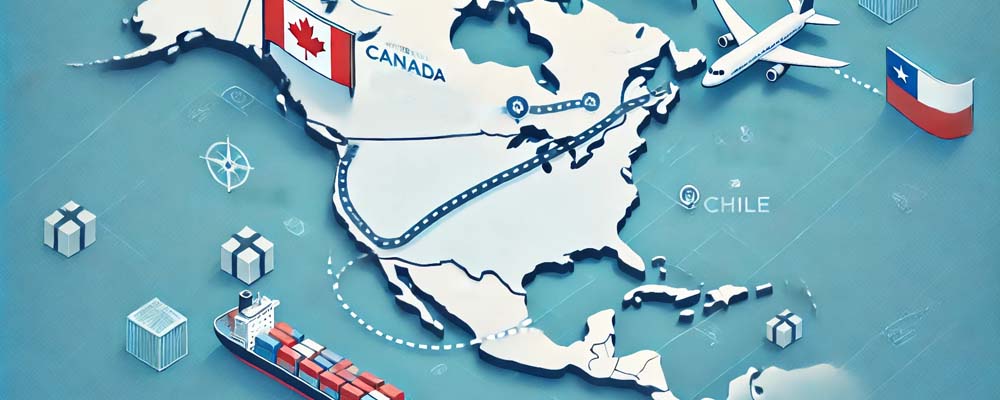 2. Shipping Routes Between Canada and Chile
2. Shipping Routes Between Canada and Chile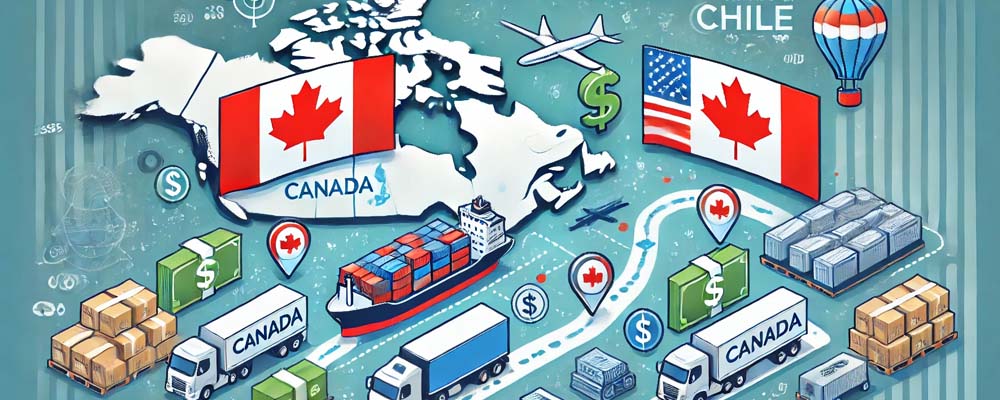 4. Costs of Shipping From Canada to Chile
4. Costs of Shipping From Canada to Chile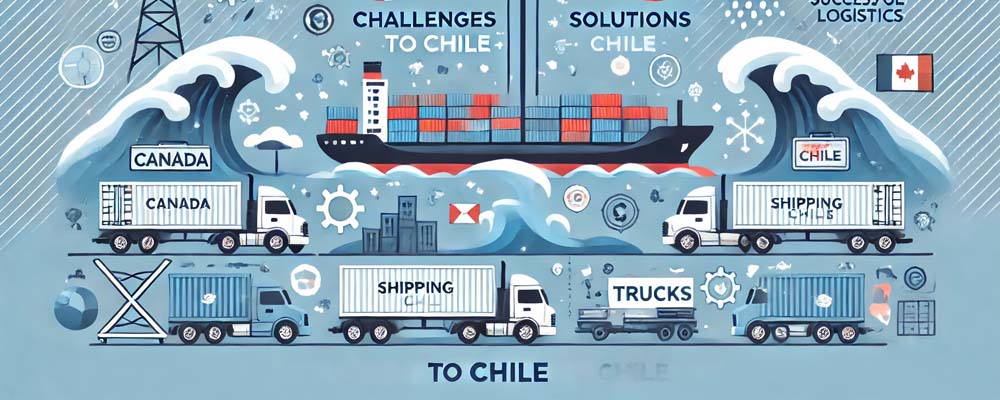 6. Challenges and Solutions in Shipping to Chile
6. Challenges and Solutions in Shipping to Chile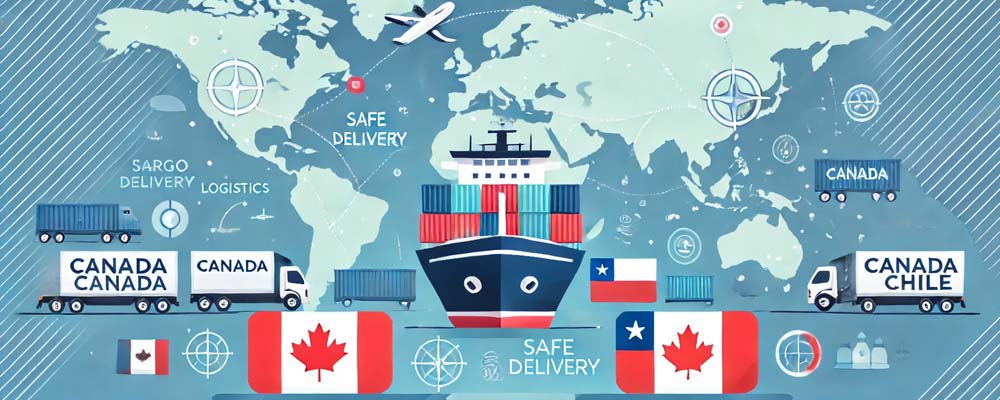 Conclusion
Conclusion



